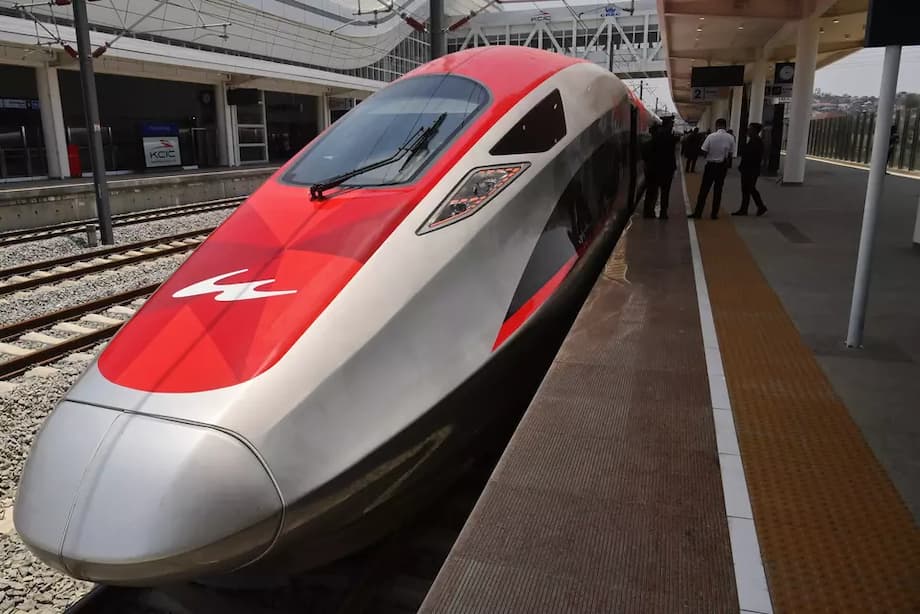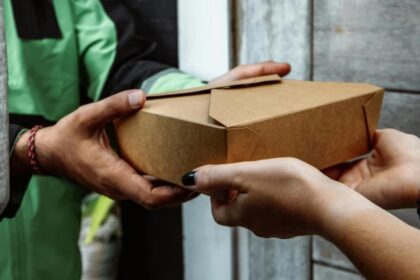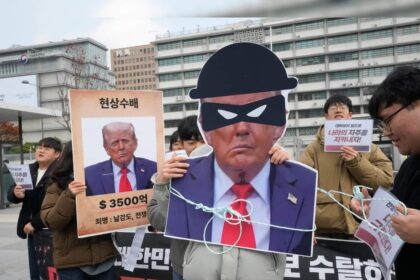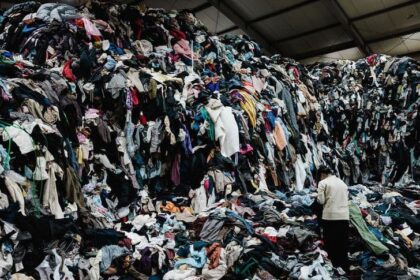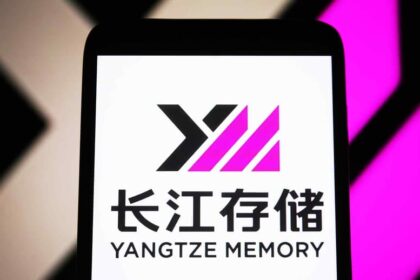Renegotiation bid aims to shield KAI and keep Whoosh on track
Indonesia is preparing to reopen talks with China over the debt that funded the Jakarta to Bandung high speed rail, the service known as Whoosh. The move, led by State Owned Enterprises Minister Erick Thohir, seeks to ease pressure on Kereta Api Indonesia (KAI), the state railway operator at the core of the project. One option on the table would keep KAI focused on running the trains while the state assumes responsibility for core infrastructure like tracks and stations. The aim is to reduce the burden of long lived assets and heavy borrowing on KAI’s balance sheet, while protecting a flagship service that has changed travel patterns across West Java.
- Renegotiation bid aims to shield KAI and keep Whoosh on track
- How the financing works and why the math is tough
- Who pays for what under the new plan
- Danantara steps in to broker a fix
- China ties and politics shape the negotiation
- Can ridership and revenue close the gap
- What it means for the Jakarta to Surabaya extension
- Risks to the state balance sheet and how to contain them
- What to Know
Whoosh began operations in October 2023 and has cut the 142 kilometer journey between Jakarta and Bandung to about 45 minutes. Adoption has been steady. The line carried 2.9 million passengers in the first half of 2025, around 10 percent higher year on year. Its popularity, however, has not offset the weight of construction loans and the cost of delays. The project cost roughly 119.6 trillion rupiah, about 7.3 billion dollars, with three quarters financed by the China Development Bank. The initial loans carried an annual interest rate near 2 percent. After the pandemic and land acquisition problems pushed costs higher by about 1.2 billion dollars, Indonesia accepted an extra loan tranche at 3.4 percent.
The debt squeeze is now visible in corporate results. KAI, which holds the largest domestic stake in the operator PT Kereta Cepat Indonesia China (KCIC) through a state consortium, reported 1.24 trillion rupiah in losses linked to the line in the first half of 2025. That is an improvement on the same period last year but still a heavy drag. Erick Thohir has signaled that the government will not greenlight the planned extension to Surabaya until the Whoosh debt is placed on a sustainable footing. The state also injected 1.8 trillion rupiah this year into KAI, but officials stress those funds are earmarked for expanding commuter rail in Greater Jakarta, not for refinancing the high speed project.
How the financing works and why the math is tough
The structure of the project helps explain today’s stress. KCIC is a joint venture between Indonesian and Chinese investors. On the Indonesian side, the shareholder vehicle is Pilar Sinergi BUMN Indonesia (PSBI), which is controlled by state companies including KAI, construction firm Wijaya Karya, toll road operator Jasa Marga, and plantation company Perkebunan Nusantara VIII. PSBI holds 60 percent of KCIC, while a Chinese consortium, Beijing Yawan HSR, holds the rest. Project funding followed a common pattern in rail builds. Shareholders contributed equity to cover a quarter of costs, while a large senior loan from the China Development Bank paid for the rest.
The cost of money matters to rail. Even at a low base rate, a multibillion dollar loan accrues volume. The initial 2 percent annual interest rate looked manageable when the budget was smaller and the schedule was tighter. The pandemic disrupted supply chains, lockdowns slowed labor and land acquisition took longer than expected. Indonesia and China agreed that an extra 18 trillion rupiah, about 1.2 billion dollars, would be needed to finish the line. That top up came with a higher rate of 3.4 percent. The blended interest rate and the larger principal increased annual servicing needs just as operating teams worked through early teething issues.
Revenue growth has not yet matched payments due. Railways require time to reach mature ridership. Demand depends on feeder links, last mile access, pricing, and reliability. Officials and lawmakers have said current ridership is below the original forecast. Some projections once assumed 50 thousand to 76 thousand daily passengers in early steady state. Actual occupancy has been closer to 40 to 50 percent of the pessimistic scenario, according to legislative briefings. Ticket sales, estimated around 1.5 trillion rupiah per year for now, cover a portion of expenses and maintenance, but not the full interest bill and principal amortization. KAI must reportedly pay close to 2 trillion rupiah per year in interest related to the project, a figure that highlights the gap between operating cash flow and financing needs.
The loan stack in brief
– Total cost: around 119.6 trillion rupiah, or 7.3 billion dollars. – Lender share: 75 percent from China Development Bank, 25 percent from shareholders. – Interest: initial loans near 2 percent, cost overrun tranche near 3.4 percent. – Structure: senior loan to KCIC, with equity from PSBI and Beijing Yawan HSR covering the remainder.
Ridership and early operations
Whoosh has proven the concept of fast intercity rail in Indonesia. End to end travel time is a fraction of the car journey on congested highways. The high speed service has also boosted demand for feeder trains. Passengers connect via a short shuttle to the Bandung city station and use the Jakarta LRT and other services at the Halim terminal. The network effect should strengthen as interchanges improve, but the early gains have not yet closed the financial gap created by cost overruns.
Who pays for what under the new plan
Minister Erick has floated a model where KAI concentrates on operations, including rolling stock, timetables, and service quality, while the state assumes core infrastructure, including tracks, power, and stations. Separating the assets can change the financial picture. It allows a public body to carry long lived infrastructure on its books and to use longer tenor borrowing. KAI would then lease access through a track access charge or concession fee. The goal is to reduce interest costs at the operating company, remove depreciation from KAI’s income statement for assets it no longer owns, and free management to focus on revenue and service.
Many rail systems split operations and infrastructure. In practice, the public owner of track and stations can refinance with cheaper sovereign backed instruments or blended funding. That can include multilateral loans, local bond issuance, or structured products at a lower coupon. The operating company pays a negotiated access fee that reflects social value and commercial potential. If Indonesia pursues this route for Whoosh, the state would likely add oversight to make sure the access fee still encourages efficiency while recognizing the public good of faster travel and economic linkages between cities.
Danantara steps in to broker a fix
Indonesia’s sovereign investment arm, Danantara, is now in the middle of the process. The fund has made Whoosh a priority and is working with KAI on options to restructure KCIC debt and rebalance equity exposure. Danantara has the mandate and flexibility to bring in fresh capital, to take out parts of the loan, or to arrange a new structure that lowers the near term cash burden on KAI and PSBI companies. That could mean negotiating lower interest, extending maturities, seeking a grace period on principal, or combining several steps at once.
Danantara’s operations chief, Dony Oskaria, confirmed that the review is active and moving forward. He outlined the status of the assessment and the intention to include the solution in the fund’s formal work plan for the year.
Dony said the assessment process is ongoing and will be completed soon.
KAI’s new president director, Bobby Rasyidin, has already warned lawmakers that the project’s finances cannot be ignored. He has described the high speed line’s debt as a risk that could detonate if left unaddressed, and he has emphasized close coordination with Danantara to protect KAI’s broader operations.
Bobby told a parliamentary hearing that the KCIC issue resembles a time bomb, with the debt load straining KAI’s performance unless restructuring moves ahead.
China ties and politics shape the negotiation
Whoosh is a symbol of the deepening relationship between Indonesia and China and is often mentioned in high level talks. The project is Southeast Asia’s first true high speed service and a visible piece of China’s Belt and Road footprint. That visibility cuts both ways. It can help create goodwill for technical fixes and a reset of loan terms. It also means both sides will weigh the political signal of any changes, especially if they involve interest reductions or a shift of risk between partners.
Indonesia has a practical interest in keeping the line running well. The service supports business travel, tourism, and regional integration across Java. President Prabowo Subianto has expressed support for extending Whoosh east to Surabaya. His team is crafting a new framework to guide that work. Any extension will require clear lessons learned from the first phase. That includes creating a predictable land process, stronger early design coordination with other transport projects, and a financing plan that aligns construction timetables with realistic ridership ramp up.
Can ridership and revenue close the gap
Passenger numbers are moving in the right direction. The first half of 2025 delivered 2.9 million riders, a sizeable total for a new service. Expansion of feeder links and better integration at both ends of the route can lift demand. In Jakarta, reliable connections to the LRT, bus rapid transit, and commuter rail make the Halim station more accessible. In Bandung, direct links to the city center shorten door to door times. Ticketing integration can also help, for example by allowing through tickets or discounts for combined trips.
Pricing is another lever. High speed rail can support dynamic fares that track demand by time of day and day of week. Promotional pricing has already introduced more riders to the service. Work with local tourism boards, universities, and conferences can fill off peak trains. Beyond ticket sales, station area development can create new revenues. Many railways capture value through retail leasing, parking, advertising, and joint development on adjacent land. Indonesia has a strong opportunity to turn stations into hubs for business and leisure, which can boost revenue without raising base fares too quickly.
Even with growth, management will still need a financing solution. Rail projects around the world require years to reach mature load factors. A workable debt profile buys that time. Danantara’s role and Erick’s proposed asset split seek to align finance with the realistic pace of operations. That is the central tradeoff. If the line can deliver on its transport mission while carrying a lighter debt service burden, it can reach stable economics without squeezing passengers or KAI’s other services.
What it means for the Jakarta to Surabaya extension
Officials have been frank that the Surabaya plan depends on a durable fix for Whoosh. Extending across Java would multiply scale and benefits, but also enlarge the financing challenge. Clarity on the business model for the current line, including who owns the assets, who pays access charges, and how risks are shared, will be essential before any ground is broken further east. A refreshed regulatory framework is already in preparation to guide an extension. That framework is expected to address land acquisition timelines, contract management, and the role of private co investors next to state actors.
Any second phase will likely include phased construction, a realistic ridership ramp, and a blend of funding sources that spreads risk over time. A wider corridor will also make integration with freight and conventional passenger services more important. Planners will need to ensure timetables and connections minimize conflicts and maximize throughput for the whole island’s network, not just for a single premium service.
Risks to the state balance sheet and how to contain them
The state has already supported the rail through capital injections into related companies and through policy backing for KCIC. PSBI companies posted heavy losses in 2024, around 4.2 trillion rupiah. Those losses translate into pressure on KAI and peer companies that perform essential public services daily. The goal of restructuring is to prevent the high speed project from weakening the broader state enterprise sector.
There are several tools to manage that risk. A government to government dialogue can set the stage for a formal reshaping of loan terms with the China Development Bank. A longer maturity and an interest reduction would ease annual cash needs. A grace period on principal creates breathing room as ridership grows. Asset separation allows the state to refinance track and stations with longer tenor instruments suited to infrastructure. Danantara can coordinate a partial takeout of the current loan, potentially tapping domestic bonds or multilateral co financing to improve the mix. Each step would be modest alone, but together they can restore stability.
Officials and commentators also watch the cautionary examples of countries that have struggled with large external debts tied to infrastructure. Indonesia’s situation is different in important ways. The domestic market is large, the asset is operational and popular, and the state has options through Danantara and other mechanisms. Still, discipline is required to avoid new obligations that simply move the burden around. The principle that guides the process is simple. Keep the trains running, keep fares reasonable, protect KAI’s core business, and match debt service to realistic cash flow.
What to Know
- Indonesia plans to renegotiate Whoosh loans with China to relieve pressure on Kereta Api Indonesia.
- A working option would keep KAI running trains while the state owns and finances track and stations.
- The 7.3 billion dollar project was financed 75 percent by China Development Bank, with initial 2 percent interest and a 3.4 percent rate on the cost overrun.
- Ridership reached 2.9 million in the first half of 2025, up 10 percent year on year, yet revenues lag debt service needs.
- KAI recorded 1.24 trillion rupiah in losses linked to the line in the first half of 2025, an improvement but still a heavy burden.
- Danantara, Indonesia’s sovereign investment fund, is coordinating debt restructuring plans with KAI.
- Lawmakers have pressed for concrete solutions to avoid spillover risks to other state enterprises.
- The government says the Jakarta to Surabaya extension will not proceed until Whoosh debt is stabilized.


